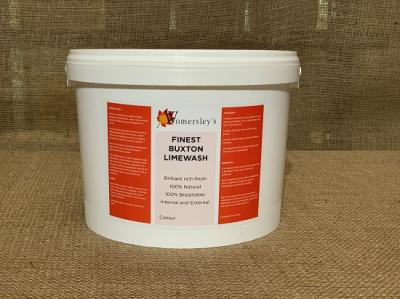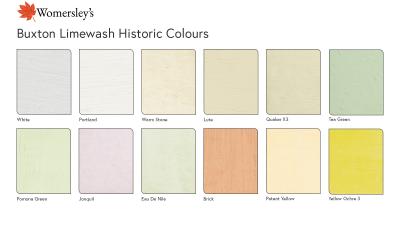How to use Limewash on older buildings
How to use Limewash on older buildings
If you’re looking to refresh your home’s exterior or interior with a breathable and traditional paint finish, limewash application is a great idea. Limewash, a mixture of slaked lime, natural pigments, limewash, has been used for centuries to create a beautiful and durable finish on various surfaces, including brick, lime plaster, and lime render.
What applications can lime be used for?
Despite the advances within the paint industry and the vast array of paints available to today’s consumers, there are still many occasions where limewash is the most appropriate decoration for older buildings.
Older buildings, pre-1910, often have a solid wall construction, without a cavity and no damp-proof course. This type of construction will always contain varying degrees of moisture and rely on the building fabric, including paints, to allow moisture to migrate freely and escape. Lime wash allows such buildings to breath freely
Modern emulsion paints, serve to hold moisture captive within this type of building. If the moisture is allowed to accumulate, this can result in deterioration failure.
What is limewash?
Research carried out at all levels has proven limewash to be the most permeable type of decorative finish available. Combine this with the fact that it has been used as a decorative finish for thousands of years throughout the world, there is no doubt that it is tried and tested.
Limewash, in its simplest form, is calcium hydroxide (slaked lime) suspended in water. After application, the water evaporates and atmospheric carbon dioxide combines with the wash to form calcium carbonate, this process is known as carbonation. During the carbonation process the limewash hardens, develops its colour and bonds to the substrate

Limewash preparation
As limewash absorbs into the surface, it works best when applied to more porous substrates, such as lime plaster, clay brick, soft stone etc. While it may appear to adhere to impervious surfaces it’s unlikely that it will provide as durable a coating as the lack of suction will impair its overall effectiveness. To ensure that the lime wash soaks into surfaces effectively, surfaces should be clean and free from grease and vegetable matter, such as lichens etc. All loose and/or flaking material should be removed. Any organic growth should be treated in an appropriate manner, such as using D/2 Biological solution.
Limewash application
It is important that a rule of one coat per day is followed, this allows each coat time to carbonate. Recoating too soon may result in the previous coat pulling away from the surface and can prevent sufficient carbonation.
Apply limewash using a large, long hairbrush. Application should be vigorous, working the wash into the substrate, using horizontal, vertical and diagonal strokes. Limewash must be applied as a thin coat and evenly across the surface. Always apply in a manner where a wet edge is maintained, this will help avoid lines from excess build-up of material. If limewash is applied too thick or heavy, this can result in crazing and cracking, should this occur wash the surface with hot water and a stiff bristle brush (i.e. a churn brush).

- Limewash is ideal for porous surfaces like brick, lime plaster, and lime render, as it absorbs into the surface and creates a breathable finish.
- Pay attention to weather conditions, as limewash should be applied in dry weather to ensure proper adhesion.
- Limewash can be a great alternative to traditional paint, providing a breathable and budget-friendly finish.
Ready mixed limewash is supplied in plastic containers please follow the advice on the container in relation to mixing, application and safety.
